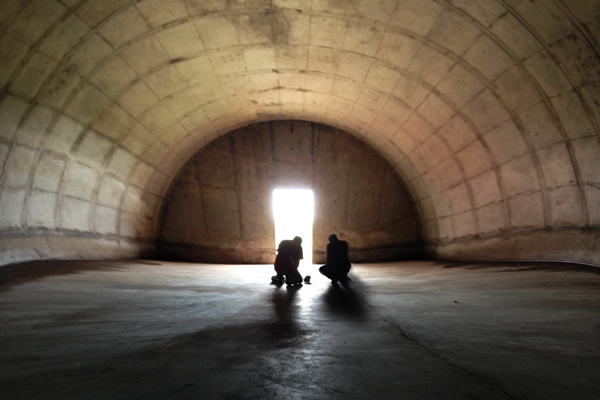- The Choice Of Life: Middle Ages - Soundtrack Crack Full
- The Choice Of Life: Middle Ages - Soundtrack Cracking
- The Choice Of Life: Middle Ages - Soundtrack Crack Torrent
- The Choice Of Life: Middle Ages - Soundtrack Cracked
The tradition of sung prayers and psalms extends into the shadows of early civilization. Such sacred singing was often accompanied by instruments, and its rhythmic character was marked. In the synagogue, however, the sung prayers were often unaccompanied. Ritual dance was excluded from the synagogue as the rhythmic character of sacred music surrendered its more sensual aspects. Even in the prayers themselves, rhythmic verse gave way to prose. The exclusion of women, the elevation of unison singing, and the exclusion of instruments served to establish a clear differentiation between musical performance in the synagogue and that of the street.
The Middle Ages was a time of great change in many areas of society. Use these essay topics to help students explore various aspects of the Middle Ages and their lasting impact on the world.

- In the Middle Ages, there were no corporations, no stock exchanges, no telemarketers and no lawyers. It may sound like paradise, but people still needed to eke out a living. And medical knowledge was far from ideal. The plague, warriors pillaging your village, and starvation were just a.
- Long for a good retro turn based RPG with a twist? Want to play a game that will have you laughing out loud? Crisis of the Middle Ages is the game for you! With a rich story and a 90s style look and feel, Crisis of the Middle Ages will have you on the edge of your couch with 6-10+ hours of intriguing, hilarious and fun game play!
The Choice Of Life: Middle Ages - Soundtrack Crack Full
The musical performance tradition of the Christian Church grew out of the liturgical tradition of Judaism. The melodic formulas for the singing of psalms and the sung recitation of other scriptural passages are clearly based on Hebraic models.
Music in the Roman Catholic liturgy was performed mainly for the mass. Originally, the music was performed by the priest and the congregation, until, in time, there emerged from the congregation a special group of singers, called the choir, who assumed the musical role of answering and contrasting the solo singing of the priest. Women participated actively in musical performances in the ancient Christian Church until 578, when older Hebraic practices excluding them were restored. From that time until the 20th century, Roman Catholic Church choirs were composed solely of men and boys.
The Choice Of Life: Middle Ages - Soundtrack Cracking
The first codification of early church music was reputedly made by Pope Gregory I during his reign (590–604). Gregory’s collection was selected from chants already in use. His codification assigned these chants to particular services in the liturgical calendar. In general it reinforced the simple, spiritual, aesthetic quality of liturgical music. The music in this collection serves as a model of melodic design even in the 21st century and is regarded as one of the monuments of Western musical literature. This school of unison liturgical singing is called plainchant, plainsong, or Gregorian chant. Specific details concerning the manner in which chant was performed have been lost. There are speculations that the quality of sound the singers employed was somewhat thinner and more nasal than that used by contemporary singers. The authentic rhythmic style of chant cannot be ascertained. There is a theory, however, that the basic rhythmic units had the same durational value and were grouped in irregularly alternating groups of twos and threes. Pitch levels and tempos apparently varied somewhat according to the occasion. There are preserved manuscript notations reminding singers to be careful and modest in their work, indicating that temptations of inattention and excessive vocal display existed for even the earliest liturgical musicians.
While modern musical traditions in the West are based to a large extent on the principles of antiquity preserved in the notated music of the early church, a secular musical practice did exist; but because of the pervasive influence of the church, the dividing line between sacred and secular aspects was thin throughout a good part of the medieval period.
The Choice Of Life: Middle Ages - Soundtrack Crack Torrent
Several types of later secular song have survived. The musical notations are for the most part inadequate to give an accurate impression of the music, but it is known that it retained the essential monophonic character of liturgical music. One curious type of secular song, conductus, originated in the church itself. This song did not use traditional liturgical melodies or texts but was composed to be sung in the liturgical dramas or for processions. For this reason it dealt occasionally with subjects not religious in character. The goliard songs dating from the 11th century are among the oldest examples of secular music. They were the often bawdy Latin songs of itinerant theological students who roamed rather disreputably from school to school in the period preceding the founding of the great university centres in the 13th century.
Several other groups of medieval performers developed literary and musical genres based on vernacular texts: the jongleurs, a group of travelling entertainers in western Europe who sang, did tricks, and danced to earn their living; the troubadours in the south of France and the trouvères in the north; and the minnesingers, a class of artist-knights who wrote and sang love songs tinged with religious fervour.
Instruments, such as the vielle, harp, psaltery, flute, shawm, bagpipe, and drums were all used during the Middle Ages to accompany dances and singing. Trumpets and horns were used by nobility, and organs, both portative (movable) and positive (stationary), appeared in the larger churches. In general, little is known of secular instrumental music before the 13th century. It is doubtful that it had a role of any importance apart from accompaniment. Yet the possibility of accompanied liturgical music has not been eliminated by modern scholars.

The Choice Of Life: Middle Ages - Soundtrack Cracked
The medieval musical development with the furthest-reaching consequences for musical performance was that of polyphony, a development directly related, as indicated above, to the experience of performing liturgical chant. For performers and performance, perhaps the most important developments in the wake of polyphony were refinements of rhythmic notation necessary to keep independent melodic lines synchronous. At first the obvious visual method of vertical alignment was used; later, as upper voices became more elaborate in comparison with the (chant-derived) lower ones, and writing in score thus wasted space, more symbolic methods of notating rhythm developed, most importantly in and around the new cathedral of Notre-Dame in Paris.
In the 14th century, partly because of the declining political strength of the church, the setting for new developments in music shifted from the sacred field to the secular, from the church to the court. This shift led in turn to a new emphasis on instrumental music and performance. Already the lower voices began to be performed on instruments—both because their long notes made them difficult to sing and because their texts (of only a few syllables) became senseless outside their original liturgical positions. Now, as secular princes became increasingly important patrons of composers and performers—a situation that would continue well into the 18th century—secular and instrumental music flourished. The polyphonic music of the church merged with the poetic art of the troubadours, and the two most important composers of the age were the blind Florentine organist Francesco Landini and the French poet Guillaume de Machaut, canon of Reims.

Most of the music of these composers seems to have been intended for combined vocal-instrumental performance, although this is seldom expressly indicated in the manuscripts. Medieval composers probably had no rigid expectations about performance media. Until the 17th century, and even through the 19th in the case of domestic performance, choice of instruments was likely to be dependent as much on available performers as on anything else. Many sources do, however, indicate that medieval musicians tended to separate instruments into two groups, loud and soft (haut and bas, or, very generally, wind and string), and to prefer contrasting sonorities within those groups for maximum differentiation of the individual parts. Outdoor or ceremonial music would be performed with loud instruments (shawm, bombard, trombone, organ); room music, with soft ones (lute, viol, recorder, harp). Paintings and manuscript illuminations of the period show that much secular performance included both a wide variety of bells, drums, and other percussion instruments and instruments with drones—bagpipes, fiddles, double recorders, hurdy-gurdies. The parts for these instruments are never found in the musical sources and must be reconstructed for modern performance.
The notation of medieval music often is misleading for the modern performer. Accidentals (sharps and flats, called then musica ficta) were often omitted as being understood. Further, it seems likely that variation, embellishment, and improvisation were very important elements of medieval performance. It is known that sections of some 15th-century two-part vocal music were enhanced by an extempore third part, in a technique called fauxbourdon; the notation of the 15th-century basse danse consisted of only a single line of unmeasured long notes, evidently used by the performing group of three instrumentalists for improvisation, much as a modern jazz combo’s chart.